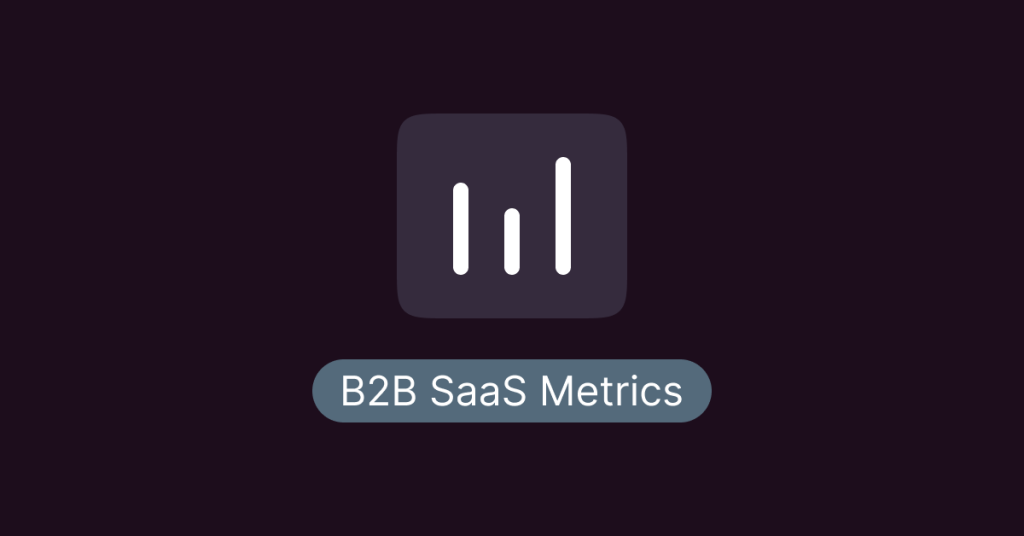In the fast-paced world of B2B SaaS, growth isn’t enough. True success lies in achieving sustainable growth, fueled by happy, loyal customers who remain advocates for your product. While flashy acquisition numbers might grab headlines, it’s retention and expansion within your existing customer base that truly drives long-term value. But how do you measure this success? What are the key metrics that tell you you’re on the right track?
This article delves into the crucial metrics for B2B SaaS businesses, focusing on two critical areas: retention and growth. We’ll explore the rationale behind each metric, how to calculate it, and its significance in understanding your overall business health. We’ll also discuss industry benchmarks and provide actionable insights on how to leverage these metrics to drive positive change.
Part 1: Retention Metrics – Keeping Your Customers Happy
Customer Retention Rate (CRR): The cornerstone of any sustainable B2B SaaS business, CRR measures the percentage of customers who remain paying subscribers over a specific period. A healthy CRR typically falls between 80% and 95%, depending on your industry and pricing model. To calculate:
CRR = ((# of customers at the end of period) / (# of customers at the beginning of period - # of new customers acquired)) * 100
Customer Churn Rate (CCR): The flip side of the coin, churn rate highlights the percentage of customers who cancel their subscriptions within a period. Low churn is crucial for profitability, and industry benchmarks vary between 5% and 10%. Calculate it as:
Churn Rate = ((# of customers churned) / (# of customers at the beginning of period)) * 100
Revenue Churn Rate (RCR): While churn rate measures the number of lost customers, RCR focuses on the associated revenue impact. By considering downgrades and upgrades alongside cancellations, it provides a clearer picture of financial health. Calculate it as:
RCR = ((lost recurring revenue) / (beginning recurring revenue)) * 100
Net Dollar Retention (NRR): This metric combines churn and expansion, measuring the overall change in recurring revenue from existing customers within a period. An NRR above 100% indicates growth, while below 100% signals contraction. Calculate it as:
NRR = ((ending recurring revenue - churned revenue) / (beginning recurring revenue)) * 100
Average Revenue Per User (ARPU): This metric helps understand the average revenue generated per customer account. Increasing ARPU through upsells, cross-sells, and higher pricing plans can significantly boost revenue. Calculate it as:
ARPU = (Monthly Recurring Revenue (MRR)) / (# of customers)
Customer Lifetime Value (CLTV): CLTV predicts the total revenue a customer will generate throughout their relationship with your company. It helps optimize acquisition costs and resource allocation. Calculate it as:
CLTV = (ARPU) * (Average Customer Lifespan)
Net Promoter Score (NPS): A widely used customer satisfaction metric, NPS measures customer loyalty and likelihood to recommend your product. Scores above 70 are considered “good,” while over 90 are “excellent.”
Part 2: Growth Metrics – Expanding Your Reach and Revenue
Customer Acquisition Cost (CAC): Understanding how much it costs to acquire a new customer is crucial for efficient marketing and sales efforts. Calculate it as:
CAC = (Total Sales & Marketing Cost) / (# of new customers acquired)
Customer Acquisition Payback Period (CAC Payback): This metric shows how long it takes to recoup the acquisition cost from a customer’s lifetime value. Aim for a payback period shorter than your customer lifespan. Calculate it as:
CAC Payback = (CLTV) / (CAC)
Monthly Recurring Revenue (MRR): Tracking your monthly recurring revenue provides a consistent snapshot of your business’s financial health. Calculate it as:
MRR = (Subscription price per user) * (# of customers)
Year-over-Year (YoY) Growth: Measuring your percentage growth compared to the same period the previous year helps assess overall progress and identify areas for improvement. Calculate it as:
YoY Growth = ((Current metric value - Previous year metric value) / Previous year metric value) * 100
Expansion Rate: This metric measures the percentage of existing customers who upgrade their plans or purchase additional features, indicating successful product usage and value realization. Calculate it as:
Expansion Rate = ((Increase in revenue from existing customers) / (Beginning recurring revenue from existing customers)) * 100
Actionable Insights: Measuring Isn’t Enough
While understanding these key metrics is crucial, simply measuring them isn’t enough. The true power lies in leveraging them to drive positive change. Here’s how:
Retention Strategies:
- Reduce churn: Analyze reasons for churn through exit surveys and user interviews. Address common pain points by improving product features, onboarding experiences, and customer support.
- Increase engagement: Track feature usage and user activity. Implement in-app guidance, personalized recommendations, and targeted communication to drive product adoption and value realization.
- Boost ARPU: Offer tiered pricing plans, introduce valuable add-ons, and run targeted upsell/cross-sell campaigns based on user behavior and needs.
- Build loyalty: Foster genuine relationships with customers through proactive communication, personalized support, and a commitment to their success.
Growth Strategies:
- Optimize CAC: Track the effectiveness of different marketing channels and refine your strategy to focus on cost-efficient customer acquisition.
- Shorten CAC payback: Increase CLTV by improving retention and ARPU, ensuring you recoup acquisition costs faster.
- Accelerate MRR: Focus on customer expansion through effective upselling, cross-selling, and offering high-value features.
- Sustain YoY growth: Track growth consistently and identify areas for improvement. Invest in product development, marketing, and customer success initiatives to fuel sustainable growth.
- Expand organically: Encourage existing customers to become advocates through referral programs and incentivized recommendations.
Conclusion:
Measuring key metrics is essential for B2B SaaS businesses to understand their health, identify areas for improvement, and set clear goals. However, the true value lies in taking action based on these insights. By implementing data-driven strategies to improve retention, expand your reach, and increase revenue, you can achieve sustainable growth and build a thriving B2B SaaS business.
Remember:
- Industry benchmarks provide a starting point, but your specific goals and context matter most.
- Regularly track and analyze your metrics to identify trends and adjust your strategies accordingly.
- Don’t be afraid to experiment and test different approaches to optimize your results.
- Invest in building a data-driven culture within your organization.
By focusing on both retention and growth, armed with the right metrics and a commitment to taking action, you can navigate the exciting and competitive world of B2B SaaS with confidence and success.

